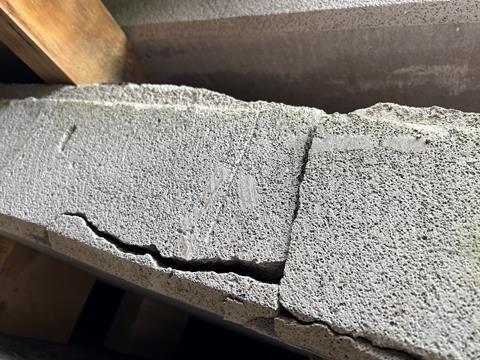The concrete panels have been identified in homes in Aberdeen, the majority of which are council properties
Lightweight concrete panels, which are at risk of sudden collapse, have been found in 500 properties, including 364 council homes in the Balnagask area of Aberdeen. Of the 364 properties, 299 are occupied by council tenants.

The local authority has relocated the council tenants to alternative accommodation following recommendations outlined in an independent structural engineers’ report.
Aberdeen City Council received an independent structural engineers’ report which confirmed the presence of RAAC in a representative sample of these properties on 22 February.
The findings of the engineers’ survey were then considered at the council’s urgent business committee meeting yesterday.
Councillors accepted the recommendation from council officers to permanently rehome tenants. The council has set aside an initial £3m to cover the rehoming programme.
>> See also: Regulator warns social landlords to get on top of RAAC dangers
>> See also: Gove confirms no government funding for RAAC housing remediation
Options for the long-term viability of the site, which include remedial works or demolition, are currently being considered by councillors. An appraisal will be presented to the council within the next six months.
RAAC was predominantly used in public sector buildings constructed between the 1950s and 1990s, including schools, hospitals, police stations and social housing.
Concerns about the safety of RAAC began to emerge in the 1980s when buildings constructed in the 50s started to show signs of failure due to the material’s estimated 30-year lifespan.
In 2018, the ceiling of a primary school in Gravesend, Kent that was built using RAAC collapsed. RAAC concerns re-emerged in September last year, when it was identified in hundreds of schools and at NHS hospital sites, leading to these buildings being closed.
The Regulator of Social Housing in England has said previously that its conversations with relevant experts indicated that RAAC is not widespread in social housing, however it warned social housing providers to check whether the concrete is present in their homes.
Miranda Radley, convener of the communities, housing and public protection committee at Aberdeen City Council, said: “This is an incredibly difficult situation for everyone living in a RAAC affected property, but the council will be doing everything we can to support our tenants during this hugely challenging time.”
“These are people’s homes and we need to ensure we support our tenants, but also engage with owners and privately rented tenants, to keep them informed on this matter.”
Radley added that a comprehensive assessment of properties within Aberdeen City Council’s portfolio is underway and that so far, no additional property types have been identified as containing RAAC.










No comments yet